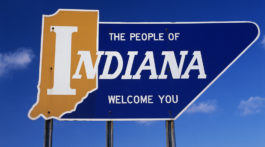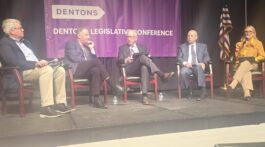The Indianapolis region’s economy continued to show steady strength in August, with unemployment dipping and job postings on the rise — even as housing activity and air cargo volumes softened slightly compared to last year.
According to the latest Indy Region Economic Indicators released by Indy Partnership, the 11-county metro area — which includes Marion, Hamilton, Hendricks, Boone, Johnson, Madison, Morgan, Hancock, Shelby, Bartholomew, and Brown counties — added jobs while the labor market remained historically tight.
The region’s labor force stood at 1,191,114, up from 1.18 million in August 2024. Employment rose to 1,148,731, a 1.6% year-over-year increase. Unemployment declined sharply from 4.0% to 3.6%, marking a 10% drop in the rate. The total number of unemployed workers fell to 42,413, down from 47,681 a year ago
Economic_Indicators_08_25
.
Job demand also stayed strong. Unique active job postings totaled 67,345, up nearly 4% from the same time last year. Average monthly hires held steady at just over 70,000. However, initial unemployment claims ticked up modestly to 4,499 in August — roughly in line with seasonal patterns
Economic_Indicators_08_25
.
On the housing front, the picture was more mixed. Single-family building permits totaled 863, down nearly 20% from August 2024. Year-to-date permits, however, were slightly ahead of last year at 7,192 units. Home sales remained brisk: 2,976 single-family units and condos were sold in August, up 8.8% year-over-year. Median home prices rose modestly to $325,000, up from $319,000 a year ago
Economic_Indicators_08_25
.
Transportation activity reflected a slower pace of growth. Total airline passengers through Indianapolis International Airport reached 7,041,628 year-to-date, essentially flat from last year. Air cargo volumes fell 3.1% to 586,448 tons. IndyGo bus ridership declined nearly 5% to 4.4 million rides
Economic_Indicators_08_25
.
National financial indicators remained on an upward trend. The Dow Jones Industrial Average climbed nearly 10% year-over-year to 45,544.9 at the end of August. Consumer prices were up 2.9%, while the producer price index rose 2.7%
Economic_Indicators_08_25
.
Commercial real estate showed gradual improvement. The region’s industrial inventory expanded to 352.3 million square feet, up 2.3% from last year, while the vacancy rate fell to 10.5%. Average industrial lease rates increased to $6.10 per square foot. Office space inventory held steady at just over 37 million square feet, with vacancy at 20% and stable lease rates around $22 per square foot
Economic_Indicators_08_25
.
Overall, the data paint a picture of an Indianapolis region in relatively strong economic shape: steady hiring, modest inflation, stable investment activity, and signs of continued recovery in commercial space. Housing construction remains a soft spot, but home sales and prices show resilience.
The indicators, compiled from sources including Indiana Department of Workforce Development, MIBOR Realtor Association, and U.S. Bureau of Labor Statistics, are released monthly by Indy Partnership to track economic performance across Central Indiana.











